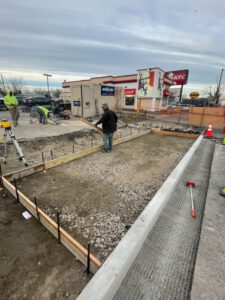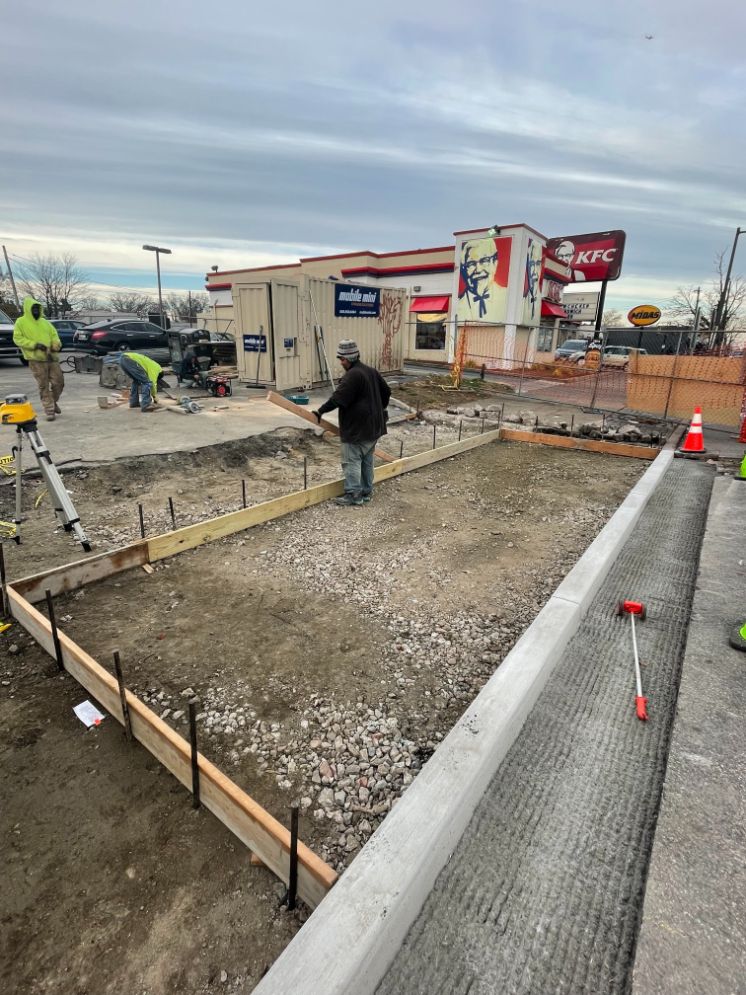Like all materials, concrete has a limited lifespan. Concrete Repair Colorado Springs are a necessary part of any construction job and require careful planning to ensure the best results.
First, the damaged area must be cleaned and prepared. Then a suitable method can be selected for the project. Some repair materials need specific curing conditions to achieve their full strength.
If you have narrow cracks in concrete that are only on the surface, they are usually safe and can be filled. This will prevent water from getting inside the crack and causing further deterioration. However, if the cracks are deeper or you notice more damage to the surface of the concrete, it’s important to seek professional help. This is because it might be a sign of more serious underlying issues that aren’t repairable with a simple filling process.
Depending on the type of concrete and the crack, it may require structural repairs, which should be done by an engineer. This will include reinforcing the concrete, using proper placement methods, and properly tying in any existing reinforcement in the area of the cracked areas. This type of repair is more complicated and requires a longer timeline than simply filling in the cracks.
In order to do a proper concrete repair, the surrounding concrete needs to be cleaned thoroughly. This includes removing any debris from the cracks and cleaning off any oil or other chemicals that may be on the concrete surface. The area should be dampened before applying the repair material to prevent it from drying too quickly and trapping air pockets inside the cracks.
There are a few different types of concrete repair materials on the market. It’s important to figure out what the problem is and then choose a product that will best solve it. For example, if the cracks are in precast concrete, you will want to use a repair material that has mechanical properties similar to the original concrete.
Once the epoxy has dried, you can sand it smooth and then apply a sealant to protect it from the elements. Look for a sealant that has built-in UV protection, as the sun can cause epoxy to break down over time.
Another repair option for narrow cracks is concrete stitching. This involves drilling an entry and exit hole across the cracks and then running a series of U-shaped metal staples into the holes. This creates a key that prevents water and other contaminants from entering the crack and causing further damage.
Repairing large cracks
Concrete has a limited “shelf life,” and even the best concrete jobs will eventually crack. This is normal and should be expected, but there are ways to slow the process down and repair the cracks before they get any worse.
The first thing to do is determine how serious the crack is. Hairline cracks that are not obvious from outside the home or patios are usually safe and can be filled with concrete patching products, but larger cracks should be evaluated by a professional before attempting a repair. The professional will be able to determine the cause of the crack and recommend a course of action based on that information.
There are several methods for repairing large cracks in concrete, but each requires careful preparation of the damaged area. Generally, all unsound concrete must be removed from the area around the crack, and the reinforcement steel must be cleaned and coated with bonding material to ensure a good bond between new and existing concrete. This step is especially important if the structural member will be exposed to extreme temperatures or fire.
For epoxy or latex concrete crack repair products, a clean, dry surface is critical for the proper application of the product. To prepare the crack for this method, a router or a hammer and chisel should be used to chisel out the crack to create an inverted V shape that will help the product adhere to the concrete. Then, the crack should be cleaned of any loose debris that could prevent the material from filling the crack completely.
Once the area is prepared, the crack should be filled with the appropriate product, following the instructions on the package. Different repair products may cure differently, so it is important to follow the directions on the package carefully. After the product is applied, it should be smoothed out using acetone (for polyurethane products) or a wet sponge (for latex products). Depending on the type of crack, the repair may require several coats to fully seal the crack. Once the concrete crack repair is completed, it is a good idea to seal or paint it to further protect it from the elements.
Repairing sunken areas
Whether it’s a sunken patio, driveway, or sidewalk, repairing concrete in this area can be tricky. Sunken areas are usually caused by the failure of the original concrete to support a heavy load. If the damage is severe enough, the entire section must be replaced. This can be costly and requires the skills of a professional contractor.
Standard concrete repair materials can be used for sunken concrete, but it is important that the new material be compatible with the existing concrete. This means that the repair material must have low shrinkage and a high percentage of coarse aggregate content in order to bond with the concrete matrix. Also, the new concrete must have mechanical properties that closely match those of the original concrete to avoid stress cracking.
The best way to prepare a sunken area for concrete repair is to remove all loose and unsound concrete. This can be done with a hammer and chisel or by using a hydraulic breaker. Next, the repair site must be cleaned thoroughly. It is a good idea to use a pressure washer to eliminate all dirt and debris. This is especially important when using fast-setting repair products.
Once the concrete repair material is mixed, it must be applied to the surface of the damaged area. For small repairs, this can be accomplished by simply using a margin trowel and a gloved hand. For larger areas, a form may be necessary. A quick-setting product like Sakrete’s Fast-Setting Cement Patcher is a great choice for this job. This product has a built-in form that will stay in place for five minutes, allowing the user to simply hold a flat trowel in place as the “form” to speed up the process.
While many homeowners attempt to tackle concrete repair themselves, this type of project should be left to professionals who have the proper training and specialized equipment to get the job done right. Trying to fix sunken concrete without the proper equipment or know-how can lead to more expensive repairs in the future. It’s better to invest in professional services the first time around to save money and avoid additional repairs in the future.
Repairing damaged areas
Often, the first step in repairing concrete is to evaluate the damage and see how bad it is. This can be done by breaking away some concrete and then taking core samples for analysis, or by using non-destructive evaluation techniques like radar, infrared thermography, impact echo, and others that can reveal a lot without opening up the concrete.
Once the extent of the damage is known, it is possible to select a repair method and material. Generally speaking, a standard repair material is best for small cracks and surface deterioration, but concrete replacement may be needed in some cases.
It is important to remember that a repaired surface must be structurally sound, so it must be prepared properly. This includes sawing the perimeter of damaged concrete into a suitable shape, cleaning and coating reinforcement steel, as well as preparing the sound concrete to accept the repair materials. It is also a good idea to use the correct concrete mix for the environment in which the repair will be made.
Many repairs are made with cement mortars, but some are done by spreading a liquid product such as epoxy or urethane. It is important to read the product label to see if there are any special requirements for this type of repair, such as the minimum or maximum application thickness and whether it can be used in wet conditions, for example.
Frequently, cracked and damaged concrete is caused by mechanical factors such as abrasion, cavitation, shrinkage, expansion and contraction, and thermal stresses. These cracks can be reduced by the use of proper construction practices and by adequate maintenance.
If the damage is due to structural problems such as settlement, foundation movement, or inadequate support, a professional engineer should be consulted. Structural repair can be achieved by replacing the damaged sections of the concrete, but there are other alternatives to patch repair that can control corrosion over the long term, such as impressed current cathodic protection (ICCP).

